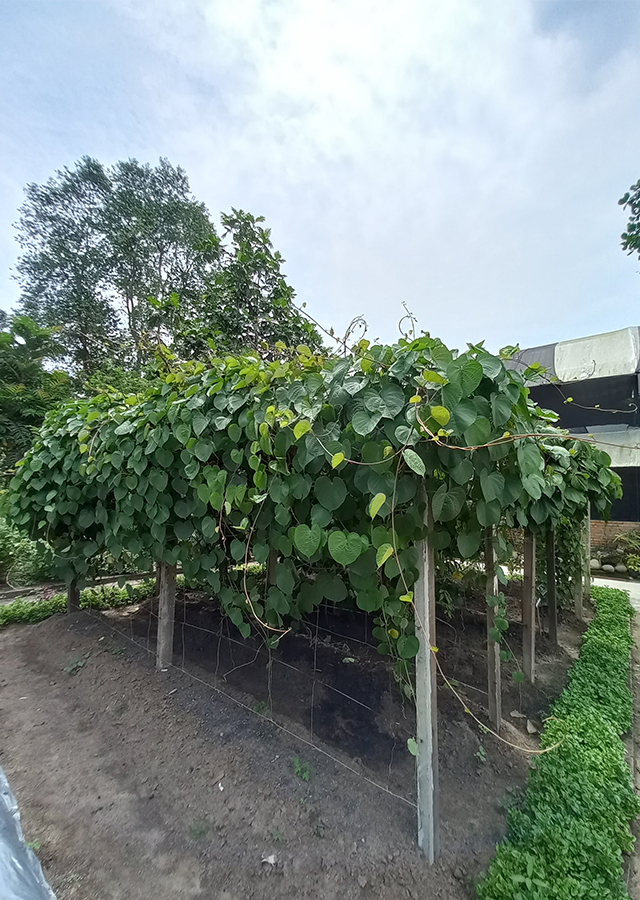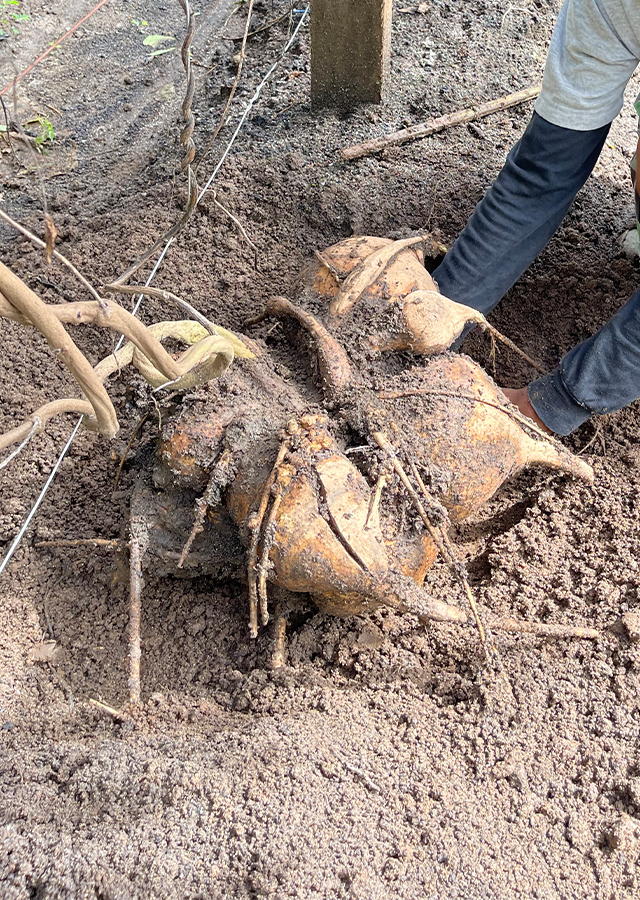Traditional Herbs from Decalobanthus mammosus
diabetes
- Take 100 g of peeled bidara roots, wash\u00a0 until clean.
- Grate then squeeze using a piece of cloth.
- Drink every morning, half an hour before eating.
What is Decalobanthus mammosus Looks like??



Parts of Decalobanthus mammosus that could be used
- Root
- Tuber
Decalobanthus mammosus Distribution
Decalobanthus mammosus or Bidara Upas is a plant from the Convolvulaceae family which is not native to Indonesia, but comes from India, the Andaman Islands and Indo-China. In Indonesia, bidara upas is cultivated on the islands of Java, Bali, Maluku and Madura as a medicinal plant and a food source (the tuber). This species is a rare species and is included in the rare criteria based on the Indonesia Biodiversity Strategy and Action Plan issued by the National Development Planning Agency (2003). In Indonesia and Malaysia, this species is widely used as a medicinal plant which is empirically effective in treating various diseases. Bidara upas is also a herbal ingredient that is widely sold as herbal medicine and is used in small traditional medicine industries. Apart from that, the upas bidara has also been used by the community as a source of fiber, where the stems can produce very fine and strong fibers, with a satin sheen, which can be made into cloth.Agroecology of Decalobanthus mammosus
Grows wild in the forest, sometimes planted in the yard near the fence. Grows well in tropical areas from the lowlands to a height of 250 m above sea level. On the island of Java, bidara upas grows at an altitude of > 500 above sea level.
Morphology of Decalobanthus mammosus
- The tubers are gathered in the ground, similar to sweet potatoes. The skin color of the tubers is yellow-brown, the skin is thick and white gummy, when dry the color turns brown.
- The small stems are quite slippery when held and the color is quite dark.
- Single leaves, long-stemmed, heart-shaped, flat leaf edges, pointed tip, 5-12 cm long, 4-15 cm wide, dark green in color.
- Flowers have a bell-like shape, white, 7-8 cm long cm, with 4 petals. Umbrella-shaped inflorescences cluster in 1-4 flowers.
Cultivation of Decalobanthus mammosus
Propagation by stem cuttings or planting tubers or tuber cuttings.
Decalobanthus mammosus, more details :
Chemical Content of Decalobanthus mammosusOxydase (sap), flavonoids, quinones, phenolic compounds, triterpenoids and steroids.
Benefits of Decalobanthus mammosus
Reduces fever, treats respiratory and digestive disorders, wounds from snakebites or burns, diabetes, coughs, hoarseness, diphtheria, sore throat, pneumonia, appendicitis, typhus, constipation, defecation of blood and mucus, vomiting blood, leprosy, melanoma, syphilis (lues), bladder stones or urinary stones, used in cancer treatment therapy, treating food poisoning, eliminating swelling, facilitating breast milk (external use), acting as a laxative and coolant. Has activity as an anti-inflammatory, analgesic (relieves pain), antidote (neutralizes toxins).
Simplisia of Decalobanthus mammosus
Another Facts for Decalobanthus mammosus :
Synonym of Decalobanthus mammosusConvolvulus mammosus Lour., Ipomoea mammosa (Lour.) Choisy, Merremia mammosa (Lour.) Hallier f.
Habitus of Decalobanthus mammosus
Creepers. Creeping or twining plant that is 3-6 m long
Habitat of Decalobanthus mammosus
- Forest
No comments:
Post a Comment